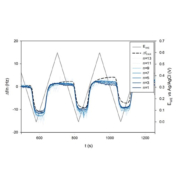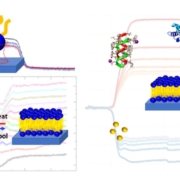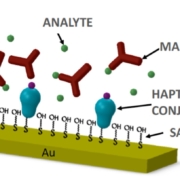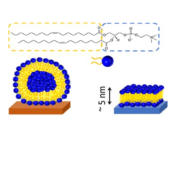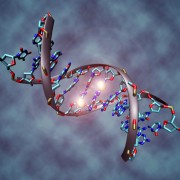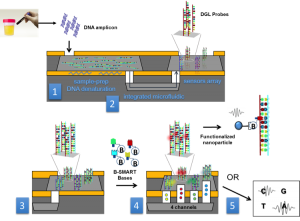Tag Archive for: sensors
QCMD in Lipid Research Tech Note
/in 2020, News/by Maribel RochaOctober 15th 2020: AWSensors is pleased to invite you to take a look to its Technology Note entitled “QCMD in Lipid Research”.
Summary of the Note
QCMD is a label-free surface-analytical technique based on a quartz resonator excited to oscillate at its resonance frequency on one or more overtones. Resonators can have various coatings: gold (Au), silica (SiO2), titania (TiO2), etc. It works in aqueous media or organic solvents and is therefore widely used for studying solid/liquid interfaces. At each overtone, QCMD measures changes in the resonance frequency and energy dissipation due to the processes occurring at the resonator surface. Examples of such processes include formation of a film or changes in the geometrical or physical properties of the film.
The key feature that makes QCMD useful in lipid research is its ability to distinguish between different geometries and topologies of lipidic assemblies at interfaces, for example, homogenous solid-supported bilayers or monolayers vs. adsorbed liposomes or other structures (such as cubosomes) without relying on fluorescent or deuterated labels but by relying on the combination of the frequency and dissipation.
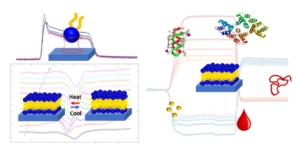
Introduction
Lipid-related QCMD work can be grouped into several topics, with a total of more than a thousand publications:
• Studies focusing on the interactions between lipids and surfaces.
• Studies focusing on the properties of the lipids, such as their phase behavior, adsorbed liposome deformation, etc.
• Studies examining interactions between lipids and membrane-binding proteins, peptides or viruses. Particularly interesting is that QCMD offers a way to study clustering of membrane-bound proteins.
• Studies focusing on the interactions of lipids with polymers or with nanoparticles.
Continue reading by downloading the full Technology Note (below) …
Download the Full Technology Note
You can download the full Note in pdf format through this link. A list of our Technology Notes can be found on our Technology Web Page.
Tracking Recovery Technology Note
/in 2020, News/by Maribel RochaSeptember 15th 2020: AWSensors is pleased to invite you to take a look to its new Technology Note entitled “Tracking Recovery Technology Note”.
Summary of the Note
Use of the AWSensors X1 Instrument Tracking Recover feature to monitor overtones frequency and dissipation shifts of air-to-liquid medium exchanges onto 5 MHz QCM sensors.
![]()
Introduction
The Tracking Recovery feature included in AWSensors X1 platform allows the user to monitor large and fast frequency shifts in QCM (Quartz Crystal Microbalance) admittance spectrum. These sudden modifications in the sensor response are common is some applications where dramatical changes in the viscoelastic properties of the sensor surrounding medium take place.
This technical note illustrates the utility of tracking recovery feature to characterize an air-to-liquid medium exchange. According to Kanazawa and Gordon theory predictions [1], a complex frequency shift is expected in the sensor electromechanical response when the semi-infinite medium placed over the QCM’s top electrode is replaced by other semi-infinite medium. This shift will depend on the viscosity and density properties of the final medium. Following, Kanazawa-Gordon equation is presented for both the frequency (Eq. 1) and the half-bandwidth (Eq. 2) shifts.
Continue reading by downloading the full Technology Note (below) …
Download the Full Technology Note
You can download the full Note in pdf format through this link. A list of our Technology Notes can be found on our Technology Web Page.
Biosensor Application Note
/in 2020, News/by Maribel RochaJuly 3rd 2020: AWSensors is pleased to invite you to take a look to the Biosensor Application Note entitled “Acoustic Biosensor“.
Summary of the Note
An immunosensor application for determination of carbaryl pesticide was developed by using AWS A20 research platform and AWS F20 Fluidic System. Carbaryl was chosen as the model analyte. Two kinds of acoustic sensors were employed: AWS HFF-QCM sensors (50 MHz and 100 MHz) and Love-SAW sensors with appropriate cells. The AWS A20 platform allowed monitoring phase-shift changes at constant frequency as a function of the sensor surface mass changes.
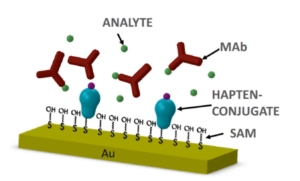
Introduction
Sensor functionalization: Carbaryl hapten conjugate was covalently immobilized by means of Self Assembled Monolayer (SAM).
Immunoassay format: The chosen competitive immunoassay was a binding-inhibition test based on conjugate-coated format. Carbaryl analyte competes against the immobilized hapten-conjugate for Monoclonal Antibodies.
Carbaryl detection: Samples were injected onto the sensors’ surfaces. AWS software allowed controlling sample injection and fluidics. Furthermore, the employed platform allowed performing the measurements at a constant temperature of 25°C ± 0.05°C.
Since analyte inhibits antibody binding to its respective immobilized conjugates, increasing concentrations of analyte are detected by a change in the increment of the phase-shift of the sensor. The following figures present a representative assay cycle selected from a continuous monitoring in a carbaryl determination, for 100 MHz HFF QCM and 120MHz Love Wave Sensors.
Continue reading by downloading the full Application Note (below) …
Download Full Application Note
You can download the full Application Note in pdf file from this link or download it from our Applications Web Page where you can find this and the rest of our Application and Technology Notes.
Lipid Bilayers New Application Note
/in 2020, News/by Maribel RochaMay 15h 2020: AWSensors is pleased to announce the release of its new Application Note on Supported Lipid Bilayers (SLB) entitled “Supported Lipid Bilayer formation followed at low- and high-fundamental frequencies“.
Summary of the Note
The process of supported lipid bilayer (SLB) formation from adsorbed liposomes is a robust biophysical system that is used in laboratories all over the world. Here, it is used to test AWSensors Quartz Crystal Microbalance with Dissipation measurement (QCMD) equipment and high fundamental frequency QCMD sensors. It is shown that the AWSensors QCMD system correctly and quantitatiely reports the frequency and dissipation changes associated with the SLB formation on high- and low-fundamental frequency SiO2-coated sensors. Some differences between the two types of sensors are highlighted. 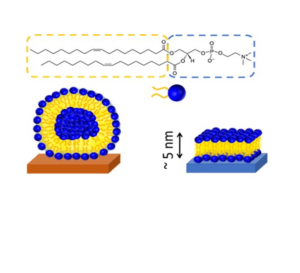
Introduction
Quartz crystal microbalance with dissipation measurement, or QCMD, has become a popular technique for research in such disparate fields as material science, biophysics, electrochemistry, and immunosensing. [1] One of the reasons for the wide range of applicability and popularity of QCMD is its ability to provide information about molecular organization (topology and geometry) at solid/liquid interfaces. Specifically, it was shown how the combination of frequency and dissipation could distinguish between different surface-immobilized lipidic assemblies: adsorbed liposomes and supported lipid bilayers (SLBs; Figure 1).[2] This allowed the process of SLB formation from liposomes on SiO2-coated QCMD sensors to be followed in situ.[2] Subsequent studies further showed how the combination of frequency and dissipation measurements on various overtones could be used to study adsorbed liposome deformation [3,4] and detect mutations through the analysis of DNA conformation and length. [5, 6]
Continue reading downloading the full Application Note (below) …
Download Full Application Note
You can download the full Application Note in pdf file from this link or download it from our Applications Web Page where you can find this and the rest of our Application and Technology Notes.
H2020 Project LiqBiopSens: A new liquid biopsy platform for early detection of colorrectal cancer
/in News, Projects/by AWSensorsDecember 10th 2015
We are proud to announce that the European Comission awarded a grant of a total value of 2’7M euros to our project LIQBIOPSENS for early detection of colorectal cancer by carrying out liquid biopsy. The grant was awarded within Horizon2020 and specifically in the call entitled “ICT-28-2015: Cross cutting ICT Key Enabling Technologies”.
AWSensors will coordinate this H2020 project during the next 3 years (2016-2018). The overall aim of this project is the further development and validation in real settings of a novel diagnostic platform for the early and fast detection of circulating tumor DNA (ctDNA) and their KRAS and BRAF mutations associated to colorectal cancer through blood samples.
Liquid Biopsy platform LiqBiopSens features
The main features of LiqBiopSens are:
- Reliability (detection rates vary from 95-100 %)
- Low-Cost
- Sensitivity (in the zM range)
- Multiplexing capabilities (analysis of 27 KRAS and BRAF mutations simultaneously)
- Short analysis time (30-60 min.)
- User-friendly interface
- Flexibility
LIQBIOPSENS platform is based on the integration of two novel complementary technologies:
- DGL© technology property of DestiNA Genomics Ltd, capable of delivering faster, more error-free detection of DNA and their mutations than current enzyme-based detection systems, making ‘false positive’ results a thing of the past.
- A novel high resolution acoustic wave microsensor technology property of AWSensors, that allows an accurate, inexpensive, label-free, direct and real-time transduction method to quantitatively evaluate the results of the application of the mentioned DGL© technique.
However, solution proposed by the LIQBIOPSENS project relies on the multidisciplinary integration of different key enabled technologies. Accordingly, LiqBiopSens will be accomplished by AWSensors and Destina Genomics in collaboration with the following partners:
- Public Health insurance in Andalusia (Spain).
- Catholique University of Louvain, the research partner with wide expertise in microfluidics (Belgium).
- FORTH, Institute of Molecular Biology and Biotechnology, the research partner with deep expertise in the application of acoustic sensors in DNA analysis (Greece).
- Sistemas Genómicos
Liquid Biopsy platform LiqBiopSens concept
The operating concept of our project is described in the following representative scheme:
ctDNA amplicons produced in chamber (1) are denatured and transferred to the sensors surface via microfluidics (2) where hybridization with DGL probes takes place; mutation‐discrimination is carried out during the injection (3) of novel probes which click selectively on the target DNA (4) while acoustic detection exploits functionalized nanoparticles (5).
Colorectal cancer, the second most common cause of cancer death
The most frequently occurring forms of cancer in the EU are colorectal, breast, prostate and lung cancers. In men, lung cancer is the most frequent cause of cancer death, while in women, it is breast cancer. In both men and women, colorectal cancer is the second most common cause of cancer death.
The “gold standard” for identifying the type and extent of a cancer is a tissue biopsy, in which a small sample of tissue is taken from the suspected tumour and histologically examined. While this procedure can provide important information about the patient disease, tissue biopsy can be painful, represents a single snap-shot in time, is subjected to significant selection bias and if the tumour tested was first detected by palpation or imaging, it may already be so large that the disease is well advanced. Furthermore, when the tumour tissue is removed or it is inaccessible, these genotyping techniques are impossible. Therefore, cancer remains a ghost disease when primary tumours are removed through surgery, meaning that there are not tools to assess the efficiency of treatments or prevent metastasis.
Liquid Biopsy, a revolution in the fight against cancer
It has long been known that solid tumors release DNA in the blood and the load of circulating tumor DNA (ctDNA) has been correlated to staging and prognosis. However, only recent advances in the sensitivity and accuracy of DNA analysis have allowed for genotyping of somatic changes found in tumors by interrogating ctDNA. This technique is known as ‘Liquid Biopsy’ and it is based on the analysis of a biomarker that can be easily isolated from many body fluids (blood, saliva, urine, ascites, pleural effusion, etc.).
Successful implementations of liquid biopsy techniques to track tumor dynamics in real time and for the early detection, such as LIQBIOPSENS, are going to revolutionise how clinicians fight against cancer.

